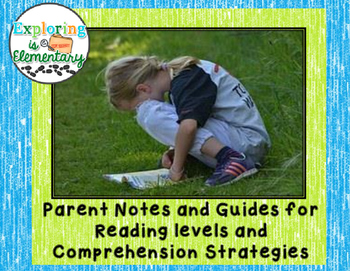I was talking with my sister-in-law, who has a boy in the second grade, and she asked what she could do to help her son in the area of fluency. Apparently on the report card, that's the comment she received, "Work on Fluency." I got to thinking, well.. I mean... there's a lot of things to do. Then my mind started in critical problem solving mode...
Why did the teacher not elaborate?
Did she just put a random, generic report card comment? <--You know you've done it!
Is he struggling with decoding?
Is he struggling with rate?
Is he struggling with meaning, visual, or structure features of words?
Does he know his sight words?
Without really sitting down and read through some stories with him, how can I help her the most?
Then she text me back,
"What exactly is fluency?"
Then it hit me. Teacher
lingo is at play.

Sometimes as teachers, we get so bogged down with the acronyms, the test names, the strategies, and the lingo that we forget most of our parents are not equipped with the same knowledge we have about the jargon we use.
Don't get me wrong, there is always that parent that knows everything and how to help their kid the best.. but normally... if we get a call back from Johnny's mom we are floored! So take each parent on a case to case basis. 😉
For the next few weeks, I'm going to write a series of blog posts that will help teachers communicate what the kids need in reading to the parents. I want to offer some tips and tricks to give parents so they are not lost and will help them feel more empowered. As teachers, we have to remember that if they can get the support they need at home and school, their level of success will soar. We shouldn't be a one man team!
So, for tonight, I want to start with just
communicating the reading level your child is on to the parent. One thing that I do after our kids move up a reading level is to give kids a slip to take to their parents. I have several versions that I might send home (depends on the kiddo)! Some just explain some broad tips to work on at home based on their level, others might say they need more help in one of the reading strategies we are working on in class. Take a look at the pack by clicking
here!
Along with these notes to the parents, I make it a big deal with the kids! We go through the whole process of talking about levels, creating goals for reaching levels, showing them what books are on their level and the next that they might enjoy most. After all, what I'm wanting is for the kids to go home and talk their HEADS off about reading levels and comprehension strategies until their parents go, "Okay, what is my kid talking about!?!"
Once I get the kids to bite, I know I will have the parents too! At Open House and Meet the Teacher Night, I do a similar spill. I show some data too! I explain to them that all I want them to do with their kids at home is to READ AND WRITE with them.
Read every night.
No. Matter. What.
Yes, there is always, always, always that parent that stands up and says, "Suzy is in competitive dance, cheer, softball, piano lessons, and Girl Scouts. We just do not have time for reading every single night on top of the other classes homework."
Count to ten, then ask, "Do you all talk or sing on the way to these extra-curricular events?"
Mom looks at you like you are crazy, "Well, yeah..."
Look back a bit more-so and say, "Well, instead of singing the new Adele song, just have her crack open her book and read out loud to you. You will know if she is struggling. Read the billboards as you go by them. Read the signs on churches or stores. Write the cheers out and then read them back. Read the Girl Scout handbook. Write out a to do list for the week. In the morning have your kid read the cereal box. It doesn't matter what they are reading and writing, as long as they are practicing and you are helping them."
Then Super Mom usually will back off for now.
Being open and communicating is the first step. Break it down to something the parents can do without them feeling like they have to do
way too much EXTRA. You know how we all feel about doing
EXTRA. 😛
I hope this helps start you off on the right direction with your parents in communicating the needs of the kids. Check back next week for some more tips and tricks, and hopefully a freebie!
Comment below on ways you help communicate with your parents!











